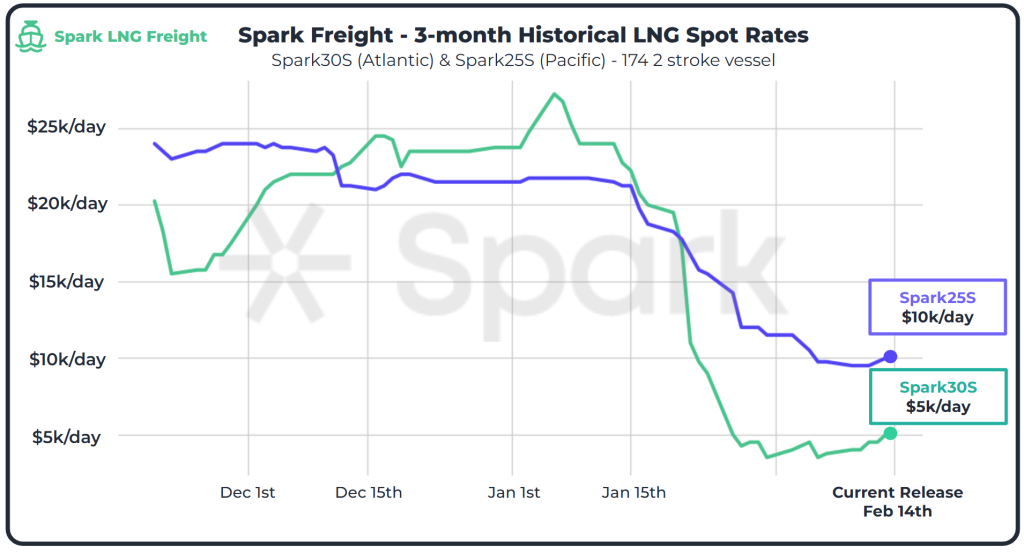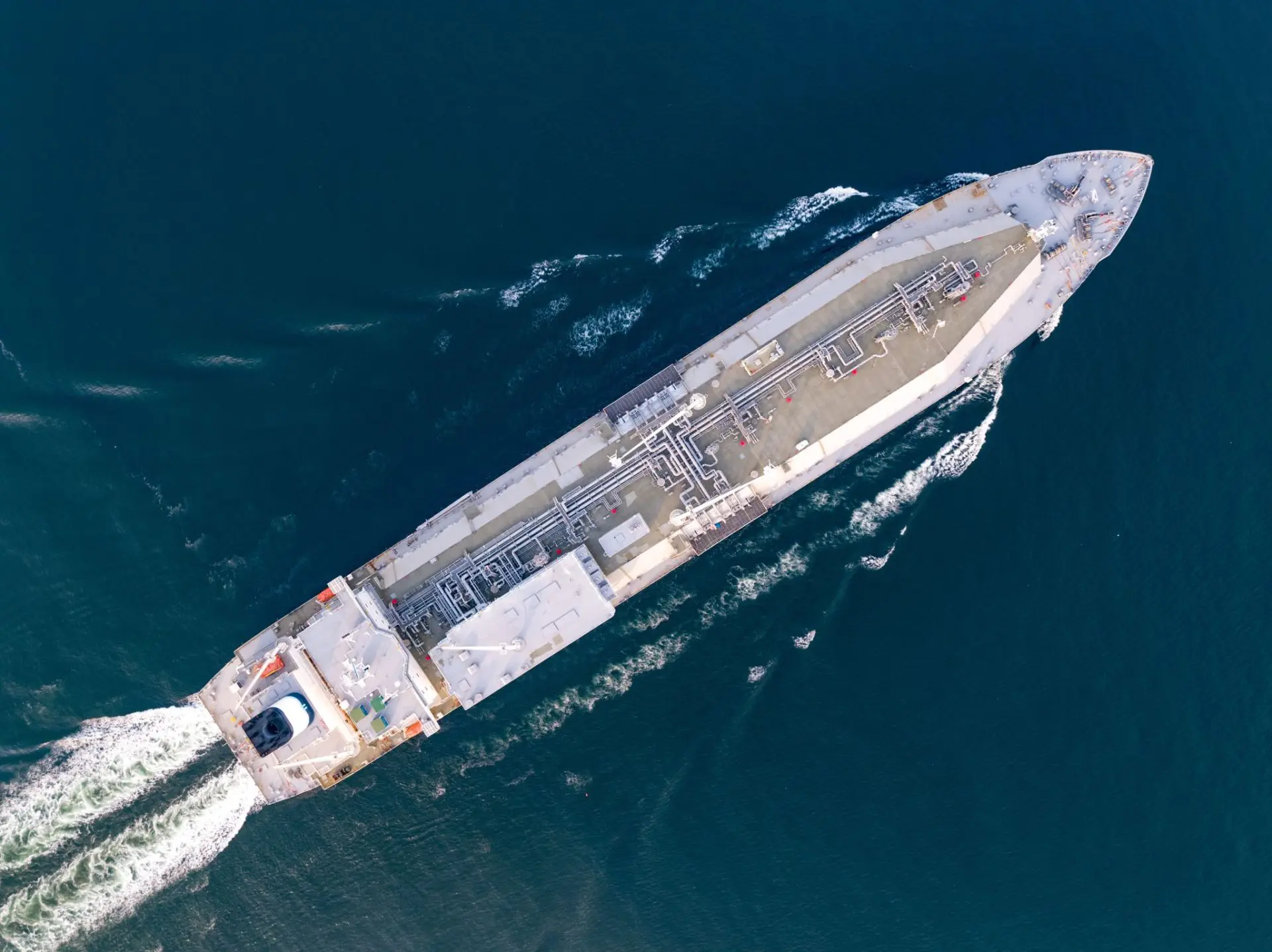This story requires a subscription
This includes a single user license.
Spark’s commercial analyst Qasim Afghan told LNG Prime on Friday that the Spark30S (Atlantic) freight rates increased by $1,250 to $5,000 per day, marginally recovering from the record lows seen in the last two weeks.

“The Spark25S (Pacific) assessment remained relatively steady at $10,000 per day,” he said.
“Spark’s calculated freight rates for 160 vessels in the Atlantic basin remain negative after almost three weeks, with the Spark30-160 (Atlantic) at -$250 per day, indicating that shipowner earnings don’t fully cover the fuel expenses associated with ballasting their vessel back to load port for a round-trip voyage in the Atlantic basin,” Afghan said.
US LNG cargoes continue to head to Europe
In Europe, the SparkNWE DES LNG decreased compared to $16.008/MMBtu last week.
“The SparkNWE DES LNG front month price for March dropped by $0.911 to $15.097/MMBtu due to a sharp drop in the TTF in the last two days,” Afghan said.
He said the discount to the TTF widened for a seventh consecutive week, “widening by $0.06 to -$0.615/MMBtu and indicating continued increased demand for LNG delivery slots in NW-Europe and the widest basis in over a year.”
“The US arb to NE-Asia (via the Cape of Good Hope) for February narrowed for a third consecutive week, rising by $0.231 to -$0.622/MMBtu, but still continuing to strongly signal that US cargoes are incentivized to deliver to Europe instead of Asia,” Afghan said.
“With the recent drop in TTF prices this week, the Omani arb to Asia has opened up further and Omani cargoes are no longer incentivised to deliver to Europe – in accordance with this, it’s been widely reported that an Omani cargo, initially signalling for Europe and the first to do so since 2023, has now diverted back to Asia,” he said.

Data by Gas Infrastructure Europe (GIE) shows that volumes in gas storages in the EU declined considerably from last week and were 46.57 percent full on February 12.
Gas storages were 50.63 percent full on February 5, and 66.41 percent full on February 12, 2024.
European LNG volumes hit record
Timera Energy said in a report on Thursday that LNG supply volumes departing for Europe in January 2025 reached their highest level for the same period across the 3 years, totaling about 11 mtpa, compared to an average of about 9.6 mtpa over 2022-2024.
The consultancy said this increase in LNG demand has come as cold and still winter weather have driven an uptick in continental demand and storage withdrawal rates, while more imports are required to balance the loss of about 15bcm/yr of Ukrainian transit flows.
Price signals have also supported Europe’s share of global LNG exports, as TTF front-month prices have risen by 14.3 €/MWh, or 26 percent, since December 16, 2024.
“The resultant declining JKM-TTF premium, now evaluated at -3.97 €/MWh on the 10th February, has driven several LNG cargo diversions from Asia to Europe,” Timera said.
Moreover, the merchant value of European regas capacity has increased following a period of weak DESNWE-TTF spreads in 2024, as improving regas utilisation calls on higher variable cost terminals, it said.
JKM
In Asia, JKM, the price for LNG cargoes delivered to Northeast Asia in March 2025 settled at $14.935/MMBtu on Thursday.
Last week, JKM for March settled at 14.725/MMBtu on Friday, February 7.
Front-month JKM dropped to 14.790/MMBtu on Monday, 14.890/MMBtu on Tuesday, and 14.920/MMBtu on Wednesday.
State-run Japan Organization for Metals and Energy Security (JOGMEC) said in a report earlier this week that JKM rose to “low-$16s on February 7 from high-$14s the previous weekend.”
“JKM had been on an upward trend due to supply concerns over continued cargo outflows to Europe and news of China’s retaliatory tariffs on US LNG, further rose significantly in the second half of the week on forecasts of a cold snap in Asia, reaching a 14-month high,” JOGMEC said.

